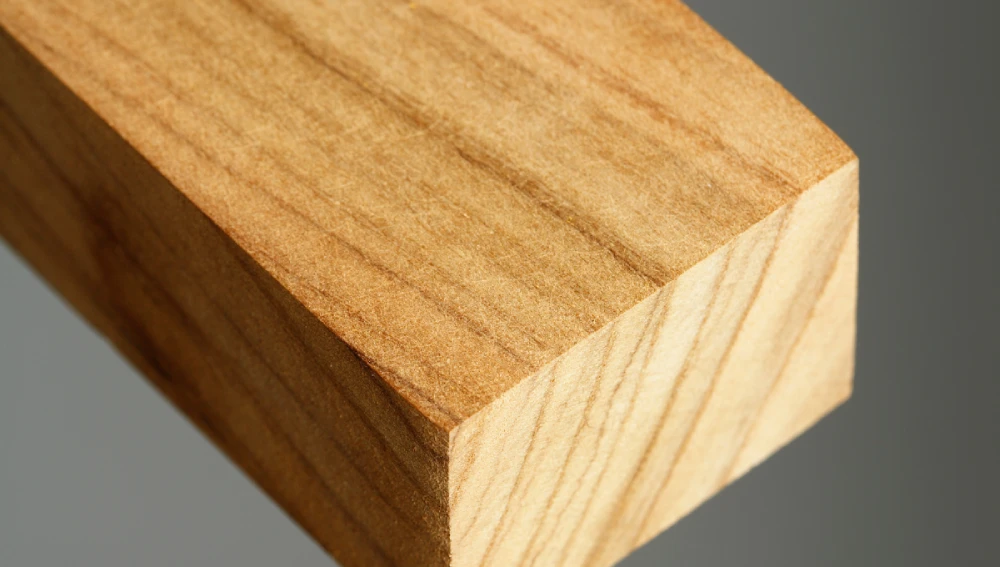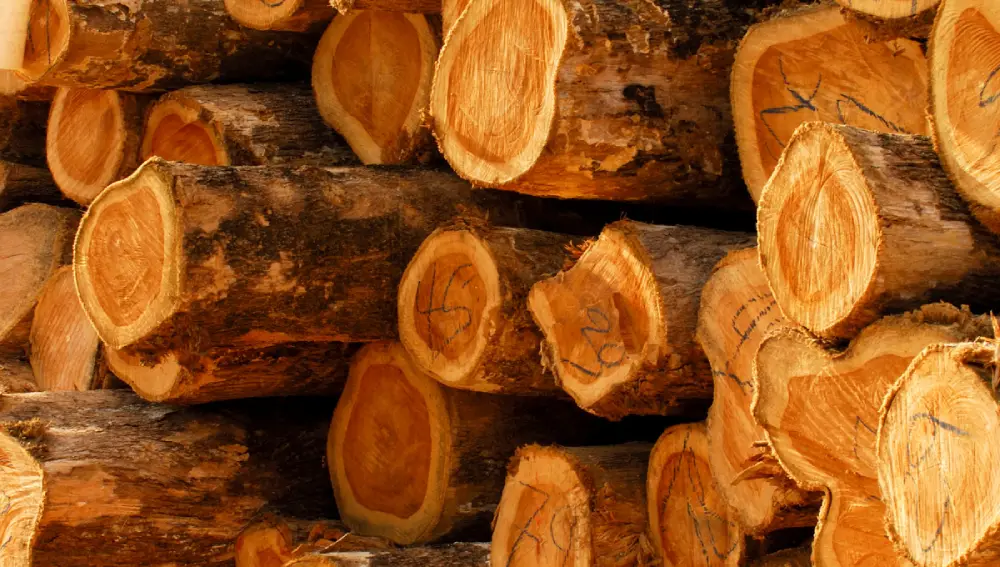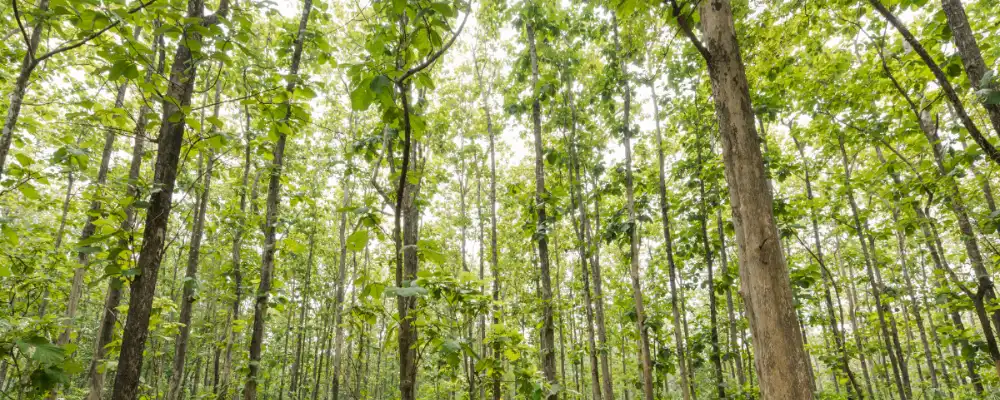Teak is a tropical wood that has been used since ancient times for the construction and creation of interior elements. The annual supply of teak wood is estimated to be between 2 and 2.5 million cubic meters (CBM). The sources of this teak wood are from the dense natural forests of approximately 1.5–2 million CBM. However, demand is much higher than supply, so imports remain high in many countries. The top three export marketers for teak wood are namely India, China, and Thailand, which have 74%, 16%, and 10% of the total trade volume, respectively. Teak wood’s oil content is high and has an aesthetically pleasing natural grain pattern. It also has relatively high tensile strength. This makes it suitable for tackling different loading conditions.
What is Teak Wood?

Teak wood is a tropical hardwood that is scientifically named Tectona grandis. Teak plantations are popularly seen in tropical regions of Asia, Latin America, and Africa. The tree size on average is 100–130 feet (30–40 m) tall, with a trunk diameter of 3-5 feet (1–1.5 m). Teak wood is highly durable and has high decay resistance. Teak wood is regarded as a sensitizers that can cause uncommon allergic reactions. Despite the wide plantations of teakwood worldwide, it is still expensive.
Properties of Teak Wood
Teak wood has many desirable properties, making it a popular choice for outdoor furniture and other applications in the construction industry. The teak wood is identified as having the following properties:
Water and natural resistance: Teak wood is naturally durable and water resistant. This is mainly because of the rubber and natural oils that are present in the teak wood. It makes it water-resistant and protects the material from decay, rot, and moisture. It is generally brittle and prevents cracking, degrading, and bending. Teak wood is significantly used outdoors as it can resist damage from rain.
- Rain and humidity: Teak can withstand constant exposure to moisture without deteriorating.
- Salty coastal regions: Teak wood can be used in high-salt coastal places.
- High temperatures and consistent sun: Teak can withstand extreme temperature fluctuations, making it fit for hot and cold climates.
- UV rays: Teak’s natural oils make it resistant to UV rays without requiring additional treatment or oils.
Non-skid properties: teak wood has a high silica content. It is identified as having skid-preventing properties.
Hardness: Teak wood has a hardness score between 1000 and 1155 on the Wood Hardness Scale. It is thus considered harder and a better choice than many other woods.
Durability: Teak wood is strong and is known for its durability. It can fight against harsh weather. It’s also naturally resistant to rotting and cracking.
Workability: Teak wood is easy to shape, carve, and mold. It has inherited dimensional stability and. gives shapes and sizes that are easily retained during the drying process. It is also easy to nail or screw things on teak wood as it has excellent adhesive and holding properties.
Density: Teak wood has a high density. ThisIt makes it have excellent insulation properties. High-quality teak furniture will prevent heat.
Termite and decay resistance: Teak wood is resistant to termites and other wood pests as it contains silica. It has low maintenance, making it highly suitable for projects that are usually vulnerable to termite infections.
Aesthetic appeal: Teak wood is popularly used in carving and designing materials. It is decoratively appealing and has a beautiful finish. It also gives natural golden-brown hues and can age well.
Identification of Teak Wood Through its Distinguishing Features

Weight: Teak wood is categorized as a luxury product. It is solid, dense, and moderately heavy. Under dry conditions, teak wood is estimated to weigh around 610–750 kg/m3. The wood contains solid fibers and is dimensionally stable, which makes it easy to work with. It is used in different types of furniture, ships, boats, etc. It is also used for the construction of wooden objects with decorative carvings that are visually appealing. The shrinkage coefficient of teak wood is typically 5.3%. Teak wood is significantly heavier when compared to other woods.
Color: Teak wood can have a color range from golden brown to light yellow-brown. The color of the teak wood entirely depends on the part of the tree, the soil, and the species it is obtained from. Higher-quality teak is usually golden brown, while lower-quality teak can be uneven and have white streaks. The color is used to identify the teak wood from other woods. Teak wood can change color over time when exposed to sunlight. Dirt and impurities can also have an impact on its color.
Grain: The grain texture of the teak is important. Teak wood is identified as having a closed grain. It is coarse and has different levels of silica. Teak has a long, dark-colored, straight grain that appears as streaks or lines running throughout the wood. These are distinctive patterns, or growth rings that might be intertwined. However, the grain can also be slightly wavelike sometimes, which depends on how it is cut and separates it from other woods.
Smell: Teak wood has a natural oil content that gives it a distinct leather-like smell. The sawdust can be checked for oiliness. This smell comes from the natural oils and resins. It is generally found in the wood’s structure, which makes it different from other woods. The oils also make teak resistant to water, bacteria, and pests.
Water test: High-quality teak is considered water-resistant as it has natural oils that repel water. To pass the water test on the teak wood, the water droplets should sit on the surface instead of soaking inside. This water test is an easy way to identify if the teak is real and The teak wood can be identified as:
- Real teak: The water will take a long time to soak in, if at all.
- Fake teak: The water will be absorbed quickly.
Conclusion:
Teak wood is highly valued among wood-based products. It is considered to be luxurious due to its rich characteristics. It is also chosen so that it can be passed down through the ages as a heritage element. Teak wood is also considered a legacy as it is extracted from trees that have been grown for hundreds of years. It is regarded as “The King of the Woods” and prominently used in the furniture industry. Identifying it correctly from other low-quality imitations is important to prevent getting cheated and to ensure longevity of wood products.

